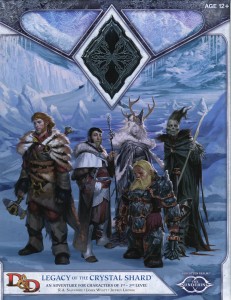While the Dungeon’s Master team enjoys some well-deserved vacation time, we’re breaking out the greatest hits and shining a spotlight on a few of our favourite articles from 2013. We’ve searched for hidden gems that our newer readers might have missed and our long-time readers will enjoy reading again. Enjoy a second look at these greatest hits from Dungeon’s Master.
Not too long ago I read the fantastic book Of Dice and Men by David M. Ewalt. It’s the story of Dungeons & Dragons and the people who play it. Ewalt explores D&D from the game’s origins through its rise to cultural prominence, and its ripple effect on popular culture today. This book is great for gamers and non-gamers who are curious about D&D and RPGs.
Originally I was going to dedicate an entire post to reviewing this book, but I realized that singing its praises in the new intro to the Stereotypes article was a better way to go. In the book Ewalt gets back into gaming after a lengthy hiatus. He has a lot of preconceptions about the gaming community and holds many of the stereotypes we discus in the article below to be true. The book does a great job of providing a fair look at gamers and role-playing games as a whole and by the end Ewalt has debunked many of the myths.
As a hardcore gamer I found this book especially enlightening. I had no idea of how D&D came into being nor did I realize how influential it was in the creation of just about every other RPG that followed it. I easily identified with Ewalt as he explored D&D through the ages, seeing myself in many of his experiences. If you haven’t read Of Dice and Men, do yourself a favour and pick up a copy. No serious gamers should be without their own copy. In my opinion this book is as vital to your RPG shelf as the PHB and DMG.
Order Of Dice and Men on Amazon.com.
From April 22, 2013, Dungeon’s Master once again presents: Stereotypical Gamers – Debunking the Myths.


